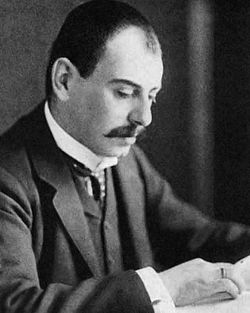Progress toward solutions
Goldbach's conjecture
Goldbach's weak conjecture, every odd number greater than 5 can be expressed as the sum of three primes, is a consequence of Goldbach's conjecture. Ivan Vinogradov proved it for large enough n (Vinogradov's theorem) in 1937, [1] and Harald Helfgott extended this to a full proof of Goldbach's weak conjecture in 2013. [2] [3] [4]
Chen's theorem, another weakening of Goldbach's conjecture, proves that for all sufficiently large n,  where p is prime and q is either prime or semiprime. [note 1] Bordignon, Johnston, and Starichkova, [5] correcting and improving on Yamada, [6] proved an explicit version of Chen's theorem: every even number greater than
where p is prime and q is either prime or semiprime. [note 1] Bordignon, Johnston, and Starichkova, [5] correcting and improving on Yamada, [6] proved an explicit version of Chen's theorem: every even number greater than  is the sum of a prime and a product of at most two primes. Bordignon and Starichkova [7] reduce this to
is the sum of a prime and a product of at most two primes. Bordignon and Starichkova [7] reduce this to  assuming the Generalized Riemann hypothesis (GRH) for Dirichlet L-functions. Johnston and Starichkova give a version working for all n≥ 4 at the cost of using a number which is the product of at most 395 primes rather than a prime or semiprime; under GRH they improve 395 to 31. [8]
assuming the Generalized Riemann hypothesis (GRH) for Dirichlet L-functions. Johnston and Starichkova give a version working for all n≥ 4 at the cost of using a number which is the product of at most 395 primes rather than a prime or semiprime; under GRH they improve 395 to 31. [8]
Montgomery and Vaughan showed that the exceptional set of even numbers not expressible as the sum of two primes has a density zero, although the set is not proven to be finite. [9] The best current bounds on the exceptional set is  (for large enough x) due to Pintz, [10] [11] and
(for large enough x) due to Pintz, [10] [11] and  under RH, due to Goldston. [12]
under RH, due to Goldston. [12]
Linnik proved that large enough even numbers could be expressed as the sum of two primes and some (ineffective) constant K of powers of 2. [13] Following many advances (see Pintz [14] for an overview), Pintz and Ruzsa [15] improved this to K = 8. Assuming the GRH, this can be improved to K = 7. [16]
This page is based on this
Wikipedia article Text is available under the
CC BY-SA 4.0 license; additional terms may apply.
Images, videos and audio are available under their respective licenses.





























